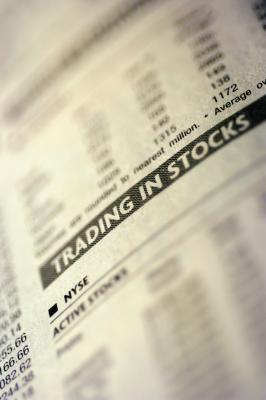Contents:


In order to have a thorough understanding of marginal costing, it is essential to define first what is marginal cost. The relationship between average and marginal cost can be easily explained via a simple analogy. Rather than think about costs, think about grades on a series of exams.

It currently costs your company $100 to produce 10 hats and we want to see what the marginal cost will be to produce an additional 10 hats at $150. Keep reading or use the links below to learn about marginal costs, and what looking at marginal costs can tell you about your business. Business profitability is largely related to internal efficiency, and finding your marginal cost and revenue may be the key to maximizing revenue. Using this calculator will help you calculate the cost of the next unit, and decide if it is worth it to increase production. Once you choose to change your output, you may find it encouraging to calculate your new potential profit!
The bottom line is that variable cost is part of marginal cost, with the other part being fixed cost. If you need to buy or lease another facility to increase output, for example, this variable cost influences your marginal cost. The business finds the marginal cost to produce one more watch is $90.
Cost functions and relationship to average cost
When, on the other hand, the marginal revenue is greater than the marginal cost, the company is not producing enough goods and should increase its output until profit is maximized. Total revenue minus the explicit cost of producing goods and services. Total revenue minus the opportunity cost of producing goods and services. Average revenue minus the average cost of producing the last unit of a good or service. A total-cost curve shows the relationship between the a. Quantity of an input used and the total cost of production.
The local, cheap suppliers ran out of oranges, so we have to move to other suppliers if we want to make and thus sell more juice. The new suppliers are probably slightly further away, so we have to make more costs for transportation. It’s also possible those suppliers charge a higher price for their oranges. Also, remember, if Marginal cost is GREATER than Marginal Revenue, then a firm won’t produce any more goods (because that would be like burning money…). This content is for information purposes only and should not be considered legal, accounting, or tax advice, or a substitute for obtaining such advice specific to your business.
The marginal cost of production measures the change in the total cost of a good that arises from producing one additional unit of that good. At some point, the company reaches its optimum production level, the point at which producing any more units would increase the per-unit production cost. In other words, additional production causes fixed and variable costs to increase. Absorption costing is the traditional practice of charging all costs, variable as well as fixed to operations, processes or products.
Marginal Cost – Formula for Calculating Contribution
If the company needs to enter into a new lease to handle the growth, this fixed cost is included in the incremental cost of these additional goods. In this video we calculate the costs of producing a good, including fixed costs, variable costs, marginal cost, average variable cost, average fixed cost, and average total cost. In economics, the marginal cost is the change in the total cost that arises when the quantity produced is incremented, the cost of producing additional quantity.
The ‘Equal but Separate’ System in India Is Enhancing Exclusion From Developmental Labour Market – The Wire
The ‘Equal but Separate’ System in India Is Enhancing Exclusion From Developmental Labour Market.
Posted: Fri, 05 May 2023 08:01:41 GMT [source]
For society as a whole—since the costs are outstripping the benefits—it would make sense to produce a lower quantity of such goods. We are not dividing the total cost itself by the number of total units produced to find the marginal cost. The concept behind marginal benefit and marginal cost extends beyond business.
Thus, ‘differential costing’, ‘incremental costing’ and ‘decremental costing’ are alternative terms, which are different from ‘marginal costing’ or ‘variable costing’ and ‘direct costing’. The manner of application of differential costing is somewhat different from that of marginal costing. Fixed cost is treated as a ‘period cost’ and is transferred to Profit & Loss Account. Absorption costing technique involves the arbitrary apportionment of fixed costs which generally leads to under-and over-absorption of costs. On account of exclusion of fixed costs from marginal costing, the problem of arbitrary apportionment of overhead does not arise at all. In present situation, the manager needs cost data organized in a format that will facilitate planning, control and decision making.
What Is the Formula for Marginal Cost?
The study of cost-volume-profit relationships is often called break-even analysis. The latter is a misnomer because the break-even point – the point of zero net income – is often only incidental to the planning decision at hand. The study of the effects of changes in volume, costs, price, etc., on profit and other aspects is the subject matter of cost-volume-profit analysis which is popularly and simply known as C-V-P Analysis. Before proceeding to delineate into the effects of changes in cost, volume and price on profit, it is better to have a look at the relationship between the Break-Even Analysis and the C-V-P Analysis.
Spotify: Missed A Beat At Earnings But Deeply Undervalued (NYSE … – Seeking Alpha
Spotify: Missed A Beat At Earnings But Deeply Undervalued (NYSE ….
Posted: Wed, 03 May 2023 20:04:57 GMT [source]
This is unfortunate, because break-even analysis is just one part of the entire cost-volume-profit concept. Even these determinants influence each other. For instance, cost influences the price, price influences the demand, demand influences both the production and the sales, production influences the costs and so on and so forth. Fixed Cost Constant – Fixed costs remain unchanged or constant for the entire volume of production. Value Influencing Factor – The volume of production or output is the only factor, which influences the costs. To determine the changes in quantity, the number of goods made in the first production run is deducted from the volume of output made in the following production run.
Is most often equal to accounting profit. Is always at least as large as accounting profit. Is a less complete measure of profitability than accounting profit. For example, let’s say you are a self-employed web-developer and you may make a profit in an accounting sense. Economists will subtract from this accounting profit the opportunity cost of not working elsewhere.
It is up to public officials to determine what it would cost to get the number of annual cases down to 300 and what the benefit would be if these funds were instead spent elsewhere. Marginal profit is the profit earned by a firm or individual when one additional unit is produced and sold. For example, a toy manufacturer could try to measure and compare the costs of producing one extra toy with the projected revenue from its sale. Suppose that, on average, it has cost the company $10 to make a toy.
The output of that equation is the marginal cost. Below is a screenshot of the calculator. How do you calculate the marginal cost? Download CFI’s free Marginal Cost Calculator. If you want to calculate the additional cost of producing more units, simply enter your numbers into our Excel-based calculator and you’ll immediately have the answer.
On the right side of the page, the short-run marginal cost forms a U-shape, with quantity on the x-axis and cost per unit on the y-axis. This marginal cost calculator helps you calculate the cost of an additional units produced. Marginal cost is the change in cost caused by the additional input required to produce the next unit. It may vary with the number of products provided by the company. Productive efficiency means producing without waste so that the choice is on the production possibility frontier.
What is the relationship between marginal cost and marginal revenue?
This means marginal cost declines by increasing the number of goods produced and reaches a minimum value at some point. Then it starts to increase after its minimum value has been reached. Figure 1 below shows a typical marginal cost curve. A lower marginal cost of production means that the business is operating with lower fixed costs at a particular production volume. If the marginal cost of production is high, then the cost of increasing production volume is also high and increasing production may not be in the business’s best interests.
- For example, the table below depicts the production quantities and costs of a firm that produces orange juice.
- They are selling price, variable costs, fixed costs and volume of activities.
- As a note of caution, erroneous conclusions may be drawn by mere reference to P/V ratio and, therefore, this ratio should not be used in isolation.
- The shapes of the curves are identical.
It follows the law of diminishing returns, eroding as output levels increase. Successful business has to go in a balanced way in respect of selling production functions. But marginal costing is criticized on account of its attaching over- importance to selling function. Production function is given less importance. The arbitrary apportionment of fixed cost complicates any attempt to measure profitability of different products.
marginal cost is equal to costs are constant only within a limited range of output and tend to increase by a sudden jump when the capacity is increased. This is that level of sales where there is no profit and no loss. At this point total cost is equal to total sales.
What the tells us is that it costs your company $0.25 to produce chair number 12,000. You may wonder why this final chair costs less than than the cost per unit for 10,000 chairs. To understand this, you should learn more about economies of scale. Below you may find the marginal cost formula if you prefer a mathematical approach. The average cost is always larger than the marginal cost. Marginal cost is the additional cost of producing one more unit of a good or service.
Now, as per the formula of Marginal cost, divide change in cost by a change in quantity, and we will get marginal cost. Say the starting point of level of output produced is n. Marginal cost is the change of the total cost from an additional output [(n+1)th unit]. Therefore, (refer to «Average cost» labelled picture on the right side of the screen.
It also includes information asymmetries, the presence of externalities, transaction costs, etc. The one that produces the highest profit would be best. Gain in-demand industry knowledge and hands-on practice that will help you stand out from the competition and become a world-class financial analyst.
A change in fixed cost would be reflected by a change in the vertical distance between the SRTC and SRVC curve. Any such change would have no effect on the shape of the SRVC curve and therefore its slope MC at any point. The changing law of marginal cost is similar to the changing law of average cost. They are both decrease at first with the increase of output, then start to increase after reaching a certain scale.
JOHN EGGERS COLUMN: We have to do better when it comes to … – The Bemidji Pioneer
JOHN EGGERS COLUMN: We have to do better when it comes to ….
Posted: Sat, 06 May 2023 14:02:06 GMT [source]
The marginal cost curve graphically represents the relationship between the marginal cost incurred by a firm in the production of a good or service and the quantity of output produced by this firm. Thus, the marginal cost of producing the second bottle of juice is $13. When marginal benefit equals marginal cost, market efficiency has been achieved. Producers are manufacturing the exact quantity of goods that consumers want, and no benefit is lost. When this efficiency is not achieved, the number of goods produced should be increased or decreased.
On the other hand, marginal costing is the technique of charging variable costs to operations, processes or products. Another use of marginal costing is profit planning. Operations planning, covering all aspects of future operations in the direction of achieving the established profit goal can be accomplished by the application of marginal costing. The readily available profit planning data on variable cost and contribution margin assist management in decision-making. The long run is defined as the length of time in which no input is fixed.